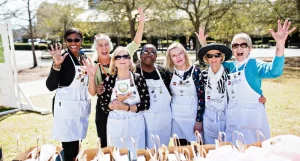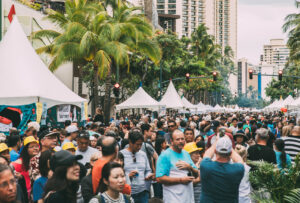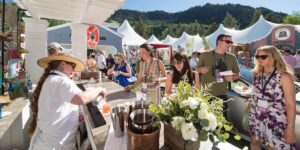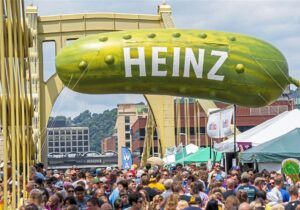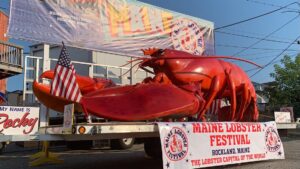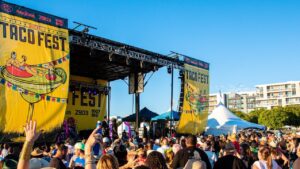18 Best Non-alcoholic drinks from North America
American Drinks Non Alcoholic North America offers various non-alcoholic beverages, representing the continent’s many cultures and traditions. These drinks suit different palates and situations, ranging from solid coffee blends to cool fruit-based beverages. Whether it’s the Southern U.S.’s famous iced tea, the continent’s popular sweet and tangy lemonade, or more unusual options like the Canadian Caesar (a savoury, non-alcoholic Bloody Mary), North America’s non-alcoholic beverages are a fusion of creativity, tradition, and local tastes.
1: Licuado Mixed Drink

A Mexican mixed drink made with milk, fresh fruit, and ice is called a “licuado.” In Latin America, the beverage is well-liked and goes by the name Batido. During the 1990s immigrant wave, the beverage became well-known in the United States.
Licuado, which translates to “blended” or “liquefied,” can include nuts, honey, and spices like cinnamon, cloves, or vanilla. In other types, chocolate can be used in place of fruit. Licuado is typically served in a tall glass with fruit on top and is regarded as a breakfast staple because of its nutritional content, which gives you energy for the Day.
2: A Sangrita Spicy Drink

A spicy, non-alcoholic beverage called sangria is typically served with tequila as a palate cleanser. The classic Mexican version’s main ingredients are hot sauce, chilli powder, and citrus juices like orange, grapefruit, and lime.
Salt and pepper are also typically used. Today’s versions depart from the past and primarily employ tomato sauce. Although the exact origin of sangria is unknown, it is mainly linked to Jalisco, the same region that gave rise to tequila.It is said that the earliest iterations may have been prepared from the leftover salad juices, and there is no standard recipe.
3: The Atole Thick Drink

Native to Mexico and Central America, atole is a thick corn beverage sipped after supper or as a breakfast beverage. It can be prepared with masa harina, a flour used in traditional Mexican cookery, cornmeal, or cornstarch.
The type of starch used dramatically affects the texture and consistency; it should ideally be thick, creamy, and lump-free. Water was always required as the primary liquid in the original, pre-Spanish Conquest recipe; today, either milk, water, or a combination can be used.
4: Birch Beer Soft Drink

Of all herbal soft drinks, birch beer is the most popular. It is most well-liked in Canada, Newfoundland, and the Northeastern United States. Birch beer is traditionally manufactured from the bark and sap of birches, and its hue varies depending on the species.
The most popular hues are red, brown, blue, and transparent; white birch beer is another name for it. Birch oil is made by distilling the sap after it has been collected. Birch beer is then made by mixing the oil with carbonated water. The first recipe for the alcoholic form dates back to 1676 and was created by fermenting birch sap instead of employing reduction.
5:A café au lait Coffee Drink

This American type of café au lait, mostly linked to New Orleans, combines chicory and ground coffee. This custom originated in France, where chicory root was widely utilized as an alternative to coffee.
The root is ground and roasted before being mixed with coffee and brewed—typically with a French press or drip coffee maker. This type of coffee first appeared in the United States during the Civil War, when coffee was expensive and in short supply.
The combination has remained popular in New Orleans, where it is produced and served with equal parts brewed coffee and scalded milk (milk heated just below the boiling point).
This kind of coffee is typically consumed with beignets, which are sugar-coated fritters, in New Orleans. The combination is supposed to work well because the unique, slightly bitter flavour of café au lait is appropriately complemented by the substantial amount of sugar on the beignets.
6: Sarsaparilla Soft Drink

The soft, non-alcoholic drink known as “sarsaparilla” gets its name from the medicinal plant that was once used to make it. These days, businesses employ artificial tastes rather than the actual sarsaparilla plant. It tastes similar to birch and root beer.
In the 1800s, sarsaparilla was promoted in the US as a treatment for several blood and skin disorders. Unlike root beer or other herbal soft beverages, sarsaparilla is not easily accessible in most nations. Nonetheless, sarsaparilla-flavored drinks are sold in many bars and large grocery stores in the Philippines, Taiwan, Malaysia, and Australia.Fitzpatrick’s, Britain’s last temperance bar, continues to produce it in tiny quantities in North England as a relic of the temperance campaign.
7: Apple Beer Drink

Apple Beer is the American non-alcoholic variant of the German beverage fassbrause. It was made in America in 1960 using Scholvien & Co.’s original recipe. The Apple Beer Corporation in Salt Lake City currently produces and distributes it.
The Western and mountainous parts of the United States and the Caribbean are the central locations for Apple Beer. Like sparkling apple cider, it has a rich, fruity flavour and is light in colour. The ingredients include vitamin C, citric acid, cane sugar, natural flavours, and purified carbonated water.
8: Italian soda American Soft Drink

Despite its name, Italian soda is an American soft drink made of soda and flavoured syrups. In addition to imitating desserts or other beverages to create flavours like limoncello or amaretto, the syrups are typically flavoured with fruit or spices to create well-known flavours like cherry, raspberry, or chocolate. Ice will be used to serve Italian sodas. Although they occasionally contain cream, the cream-based kind is typically called French soda or cream soda. Rinaldo and Ezilda Torre popularized Italian soda by combining Italian-style syrups with soda and launching flavoured soda sales in North Beach, San Francisco.These Italian-style flavoured syrups are made by the Torani firm they founded.
9: Tascalate Coca Drink

Chiapas is the birthplace of the Mexican cocoa beverage known as tascalate. There are several varieties, and the most popular additives are achiote, cinnamon, and vanilla, in addition to the foundation prepared with toasted maize and cocoa. After the components are ground into a powder, they are combined with either milk or water.
The beverage is sweetened and should always have a bit of a dense consistency with a frothy top. Traditionally, it is served cold. An ancient beverage with pre-Columbian roots is tascalate. These days, a prepackaged powder combined with water or milk can also be used to make it.To make the foundation powder, corn tortillas are occasionally roasted and crushed.
10: Fizzy Cebadina Drink

A popular beverage, cebadina is characterized by its vivid pink hue. It can be made in a variety of ways, but usually, it starts with a foundation of tamarind, red hibiscus flowers (jamaica), and barley water or fermented pineapple (tepache).
When the combination is poured into a glass, a tablespoon of baking soda is added to make it highly frothy. The mixture is typically kept in oak barrels. Traditionally, Cebadina has been linked to León, a city in the central Mexican state of Guanajuato.
It is typically served with guacamayas in speciality stores or on street carts. It is frequently hailed as an excellent hangover remedy and is occasionally consumed after a meal.
11: Red Eye Coffee Drink

An espresso shot is mixed with brewed coffee to create the American coffee variant known as “red eye.” The moniker, which alludes to extreme fatigue that occasionally results in bloodshot eyes, is American, even if this coffee type is available abroad.
Compared to ordinary coffee, this mixture is a more potent stimulant that increases focus and keeps you awake. There are numerous varieties and names for red-eye coffee.
12: Rice-Based Horchata Drink

In its most basic form, Horchata is a rice-based beverage produced by soaking rice in water, usually with cinnamon added. The mixture is blended, typically sweetened, and filtered to achieve a smooth, creamy texture. Horchata has a lengthy history and probably originated in Africa and Europe.
Horchata is primarily used in Latin America as a general term for a wide range of comparable drinks made from grains, fruits, seeds, and occasionally herbs and spices. It has been known in Mexico since the 16th century, where it most likely first appeared.
13: Drink of Espresso from Café Cubanpresso

Cuban espresso, Cuban coffee, Cuban pull, or Cuban shot are all names for the distinctive, pre-sweetened variety of espresso that originated in Cuba and is known as café Cubano. Despite having a special place in Cuba, where it has long been considered the most important social and cultural beverage, Cuban espresso is also incredibly well-liked and accessible across Florida and Latin America.
It is made from an espresso shot that has been sweetened with demerara sugar during brewing. By brewing the darker roasts with sugar, Cuban-style espresso produces light-brown foam on top of the coffee. A glass of water is usually provided with Cuban-style espresso, a mid-afternoon standard.
14: Pozol Fermented Drink

Pozol is a fermented cornbread beverage from pre-Columbian Mexico.To make the beverage, corn is primarily cooked in lime (nixtamalization). It is then cleaned, crushed, and kneaded into a dough that frequently contains chocolate. After fermenting, the dough is combined with water. Sugar or other components are optional.
Small bowls carved from the rind of the calabash tree (jícara) are traditionally used to serve pozole. It is most commonly associated with and consumed in the Southeast region of Mexico, especially Tabasco.
Pre-Hispanic in origin, this age-old local specialty was hailed as a nourishing beverage that quenched thirst. Additionally, it was convenient because the dough could withstand lengthy travel and hold up well under hot conditions.
15: Egg Cream Drink

The recipe for egg cream does not call for either eggs or cream, despite its name. It is a bubbly concoction of seltzer, chocolate syrup, and chilled milk. The cocktail is almost solely associated with New York, however its exact origin is unclear.It is thought to have originated among the Jews from eastern Europe who immigrated to New York in the early 1900s. Before the number of soda fountains and ice cream shops, where it was mostly produced, began to decline, the beverage was quite popular.
16: Soñando Morir Mixed Drink

Originating in the Dominican Republic, morir soñando is a well-known mixed cocktail. Traditionally, orange juice, sugar, milk, and crushed ice are used to make it. First, combine the milk and sugar until the sugar dissolves.
After the mixture has been chilled, ice and orange juice are poured to the glass. Even though the ingredients are straightforward, care must be taken to combine them all without curdling the milk. To prevent the drink from becoming overly watery when the ice melts, some people advise combining the orange juice and sugar first. This drink is called “die dreaming” because it is said to induce drowsiness. There are versions with additional vanilla, oats, lemon juice, or alcohol because the drink changed over time.
17: The Switcha National Drink

The Bahamas’ national beverage is Switcha, a line of non-alcoholic drinks with a lemon-lime flavor produced in Nassau. Key limes or lemons, water, and sugar are the ingredients. Traditionally, this beverage is served with duff, a delicacy made of bread filled with boiling fruit.
In the late 1780s, Bahamian switcha made its way to the Bahamas from the southern United States.
18: Hot Chocolate de Mani Drink

The Dominican Republic’s most popular hot beverage is called “chocolate de mani,” which translates to “peanut cocoa.” Unsalted toasted peanuts, milk, sugar, cloves, cinnamon, and ground nutmeg are the ingredients. Mix milk, toasted peanuts, and sugar to taste to make chocolate de mani.
After pouring the mixture into a pot, add the cloves and cinnamon sticks, and let it simmer for ten minutes. Then remove the cloves and cinnamon and serve.
Summary
The region’s different cultures and traditionsDifferent types of soups are reflected in the variety and flavor of North American non-alcoholic drinks. Fruit punches, lemonade, and refreshing iced tea are popular options, but more unusual drinks like horchata (a sweet, spiced rice drink) and the Canadian Caesar (a savory, non-alcoholic drink) offer variation. In addition, coffee and tea are staples, with regional variations such as cold brew coffee in the United States and café de olla in Mexico. The drinks come in a variety of flavors, ranging from savory to sweet, and are used in both informal and celebratory situations all over the continent.
Frequently Asked Questions
What is a popular drink in America?
For many years, iconic American drinks have served as a symbol of “the American way of life.” Put the United States in your refrigerator, along with the staple Coca-Cola and the tropical Calypso, which includes Monster Energy. You may find the American product that suits your taste here, whether it’s for breakfast, sports, aperitifs, or snacks.
Which drink is made in America?
What could be more American than sipping bourbon on July 4th, as it is known as “America’s Native Spirit”?
Which drink sells the best in the United States?
For many years, Coke has been the most popular soft drink in the US. With an estimated 1.9 billion servings across 200 countries, Coke is the most popular drink globally despite being 130 years old. As a result, Coca-Cola is one of the most valuable brands globally.
What are the United States’ national drinks?
Before the American Revolution, coffee was a rebellious alternative to British tea. Along with bourbon, Mug Root Beer, and Coca-Cola (and Pepsi), it has become the national beverage of the United States due to its widespread appeal.
What is meant by a dry cocktail?
A drink with a stronger astringent bite and less sweetness is classified as “dry.” This indicates that the cocktail has used additional flavorings, such as citrus, herbs, spices, or bitters, to counterbalance the base liquor’s powerful flavor.

